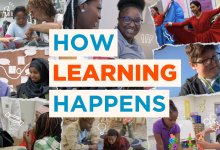Teaching Strategies
Discover best practices for improving your teaching craft.
Simple Swaps for Moving From Passive to Active Learning
These tips demonstrate that planning for active learning experiences doesn’t have to be time-intensive or difficult.2.4kYour content has been saved!
Go to My Saved Content.Integrating Music and Art in Elementary School ELA
These strategies help upper elementary students strengthen their visualization skills and understanding of story elements.Your content has been saved!
Go to My Saved Content.Why Movement Matters in Math
These strategies for building controlled movement into learning can help middle school math students stay focused and engaged.Your content has been saved!
Go to My Saved Content.A More Efficient and Productive Way to Conduct Math Assessments
Here’s how to assign graded work that more accurately assesses elementary students’ learning and saves time.Your content has been saved!
Go to My Saved Content.Making Math Review a High-Energy Game
In the 100 Squares Challenge, math review takes the form of friendly—but fierce!—competition, inspiring students to complete problems under pressure.5 Tech Integration Mistakes—and What to Do Differently Next Time
Classroom tech use will always involve some element of trial and error, but many pitfalls are avoidable when you know what to watch out for.13.5kYour content has been saved!
Go to My Saved Content.How Learning Happens
In this series, we explore how educators can guide all students, regardless of their developmental starting points, to become productive and engaged learners.2MYour content has been saved!
Go to My Saved Content.7 Ways to Get Math Students to Show Their Thinking
Math isn’t just about answers—the process matters, too. These strategies spotlight reasoning and reveal student thinking.87.4kYour content has been saved!
Go to My Saved Content.3 Games to Amp Up Reading Instruction
Gamifying literacy and phonics lessons teaches students valuable social-emotional skills, gives them regular movement breaks, and increases their engagement.Cultivating a Peaceful Classroom Before Winter Break
A classroom veteran shares some tips for times when students are all wound up and you still have lessons to teach.9.3kYour content has been saved!
Go to My Saved Content.Why Are Some Kids Thriving During Remote Learning?
Though remote learning during the pandemic has brought many challenges, some students seem to be thriving in the new circumstances. What can we learn from them?1.5MYour content has been saved!
Go to My Saved Content.Making Retrieval Practice a Classroom Routine
By regularly working in activities that get students to recall content they’ve learned in the past and apply it, teachers can ensure deeper understanding.60-Second Strategies for Educators
Our popular series of short videos that break down effective classroom practices for every grade level in literally one minute—all in one place. How’s that for a quick win?561.1kYour content has been saved!
Go to My Saved Content.30 Ways to Bring Calm to a Noisy High School Classroom
From 'finding the lull' to the magic of a dramatic whisper, these teacher-tested strategies quickly get high school students focused and back on track.Is it Time to Drop ‘Finding the Main Idea’ and Teach Reading in a New Way?
Some schools are changing the way they teach reading—based on research that shows background knowledge is more critical to comprehension than general skills like ‘finding the main idea.’1.1MYour content has been saved!
Go to My Saved Content.













